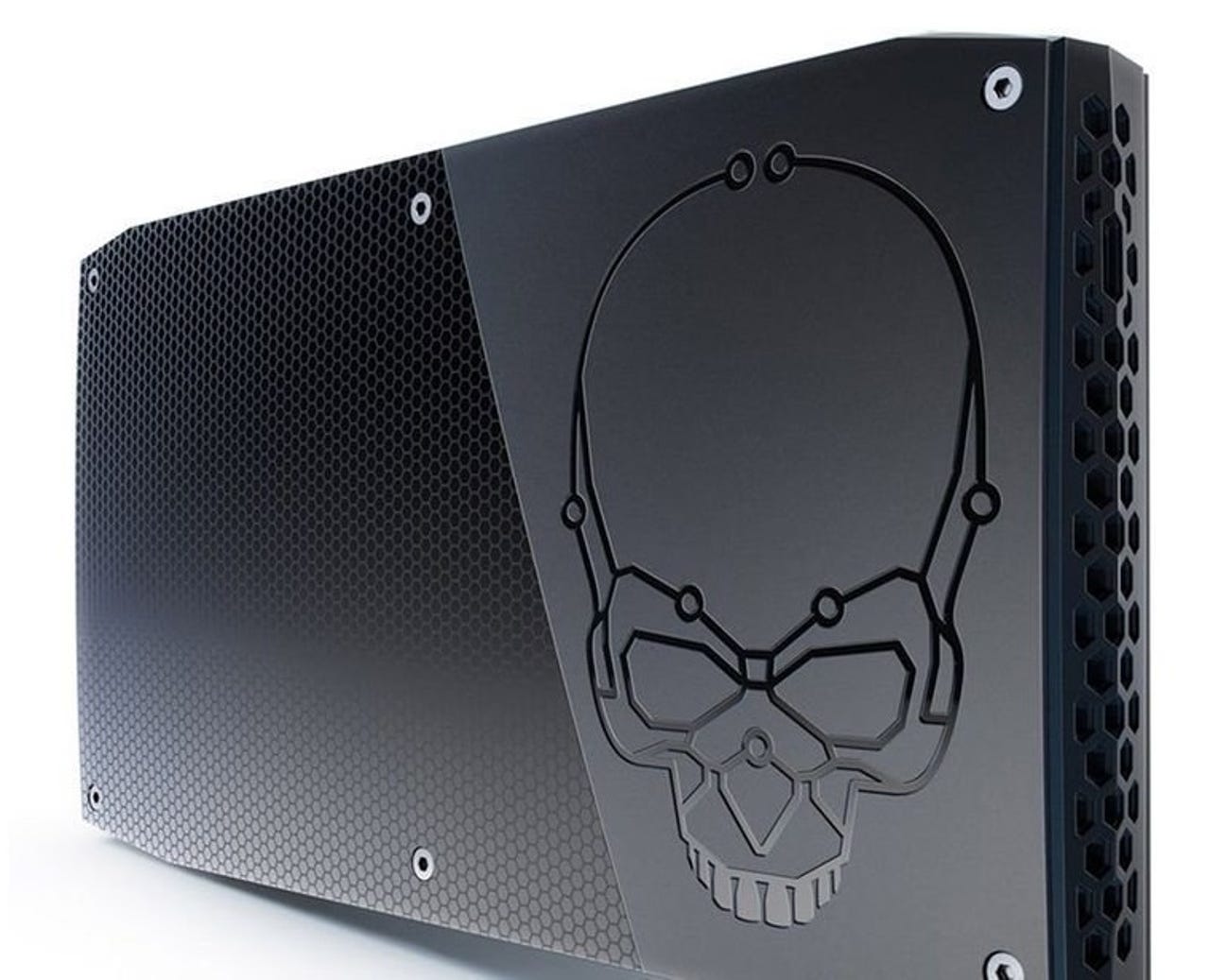Hades Canyon NUC mini-PC features both Intel, AMD inside


Intel Hades Canyon NUC
It's a classic case of the enemy of my enemy is my friend: While Intel and AMD are rivals when it comes to processors, they both have a common target in Nvidia when it comes to computer graphics. Though Intel has made strides in improving the integrated graphics for its Core CPUs, they still can't really cut it when it comes to serious computer gaming and other video-intensive applications.
Featured
As a result, the company announced a partnership with AMD at this year's CES to add a custom Radeon RX Vega M GPU to select mobile versions of its eighth-generation Core i5 and i7 processors. AMD has long set its sights on toppling Intel from its CPU perch, but when it comes to discrete graphic, it's competing with Nvidia for the crown. One reason AMD may have been willing to do this deal is that its share of the laptop processor market is much lower than in desktops, where its Ryzen chips have made a splash since their debut last year.
While the first notebooks featuring the Core G series are just starting to roll out, the product sporting the new components that is garnering the most attention is actually a desktop. Also teased at CES, Intel's souped-up mini-PC dubbed the Hades Canyon NUC will be taking advantage of the graphics power, which is difficult to squeeze into the type of tiny system the NUC (short for Next Unit of Computing) represents.
The Hades Canyon NUC is getting closer to being released, as evidenced by the number of reviews that have been published online in the past couple of days. The consensus: Despite its diminutive form factor, it packs more power than many of its mini-PC competition, fully capable of running virtual reality applications that it was designed for.
Mini-PCs often have a difficult choice to make -- rely on integrated graphics to stay svelte, or forego a bit of the "mini" to make room for a graphics card of some kind. The Hades Canyon NUC may be the mini-PC that avoids such compromises, as it may be smaller than your cable box while packing the equivalent graphics power of Nvidia's GeForce GTX 1060 Max-Q (per our sister site CNET's review).
If that sounds too good to be true, that's because there are a couple of caveats. First is the price. At around $800 for the Core i7-8705G version and $1,000 for the edition with overclockable i7-8809G, it's costlier than most other mini-PCs, which is especially true given another factor to consider. The Hades Canyon NUC is being sold as a bare-bones unit, with consumers forced to provide RAM, solid-state storage, and operating to complete a fully functional system. While that is an additional cost to be factored in, gamers might welcome the opportunity to purchase the components they want rather than be limited to pre-built configurations.
Reviewers agree you won't achieve the type of performance from the Hades Canyon NUC that you would from a full-fledged gaming desktop with a top-end discrete graphics card. Then again, you might not want to display such a tower next to the HDTV in your living room. Plus you get a glowing skull on a computer that weighs just 2 pounds and can easily be moved around in a backpack with your VR glasses. Is that worth the price tag for you?